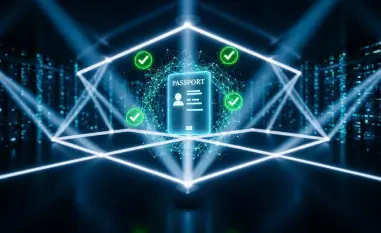The ongoing conflict in Ukraine has raised significant concerns about the future of European security and the potential for lasting peace in the region. As the war continues to escalate, the need for a comprehensive and effective post-war security architecture becomes increasingly urgent. This article explores the challenges and opportunities for Europe in ensuring post-war security and achieving lasting peace in Ukraine. In the face of deep-seated mistrust and geopolitical complexities, the stakes are high for both Ukraine and Europe, as well as for global stability.
The Complexity of Negotiations
The path to peace in Ukraine is fraught with complexities, primarily due to the deep-seated mistrust between the involved parties. Ukraine and Europe harbor significant fears that any deal brokered by the United States with Russia might not adequately protect Ukrainian interests. This pervasive mistrust complicates the initiation of negotiations, the achievement of agreements, and the establishment of a post-war security framework. Clear and structured negotiations are essential to address these concerns and to pave the way for a peaceful resolution.
A clear and structured approach to negotiations is paramount. This involves distinguishing between the initiation of talks, the reaching of an agreement between Ukraine and Russia, and the creation of a robust post-war security architecture. Specifically, the first step must focus on bringing all relevant parties to the negotiation table, acknowledging each side’s concerns and seeking common ground. Without this initial clarity and trust-building, subsequent steps are likely to falter, making it challenging to achieve a durable and comprehensive resolution to the conflict.
In addition to establishing initial trust, the next critical step is reaching a mutually acceptable agreement that addresses the core interests of both Ukraine and Russia. This agreement must be detailed and pragmatic, providing concrete measures and frameworks for peace. Finally, establishing a credible and effective post-war security architecture is essential to ensure long-term stability. This requires the commitment of all parties, including the U.S., European nations, and international organizations, to enforce the agreement and prevent future hostilities.
Ensuring Post-War Security
One of the primary concerns for both Ukraine and Europe in any peace negotiations is the assurance that the conflict will not resume. There is a widespread fear that Russia may use any armistice to regroup and launch another attack in the future. This concern is mirrored by fears in Russia regarding Ukraine and Western intentions. Therefore, a robust and credible post-war security architecture is essential to prevent the resumption of hostilities. Ensuring that such a framework is comprehensive and mutually acceptable is vital for a lasting peace.
The establishment of such a security framework requires the cooperation and commitment of all involved parties. This includes not only Ukraine and Russia but also the United States and European nations. Ensuring that all parties feel secure and protected is crucial for the success of any post-war security measures. Without a collective commitment and shared responsibility, the likelihood of sustainable peace diminishes, leaving the region vulnerable to future conflicts.
Furthermore, the security framework must include specific mechanisms for monitoring and enforcement. This could involve international peacekeeping forces, regular inspections, and compliance verification to ensure that all parties adhere to the agreement. Additionally, it should provide for economic and humanitarian support to rebuild war-torn areas, fostering stability and reducing the risk of future conflicts. By addressing both security and socio-economic dimensions, the post-war framework can create the conditions necessary for lasting peace.
The Role of the United States
The United States plays a pivotal role in the negotiations and the establishment of a post-war security framework. However, the involvement of the U.S. is also a source of contention. While the U.S. might initiate talks with Russia, genuine progress requires the cooperation and confidence of Ukraine and Europe. Any negotiations that do not make these parties feel secure in a post-war environment might lead to prolonged or even intensified conflict. Thus, the U.S. must carefully navigate these dynamics to foster collaboration and trust among its allies.
A frank and open dialogue between the U.S. and European nations is essential to ensure active engagement and to address fears of abandonment or punishment. The U.S. must work closely with its European allies to develop a unified approach to the negotiations and the establishment of a post-war security framework. Without such cooperation, the negotiations risk becoming fragmented, undermining the prospects for a comprehensive and lasting peace in Ukraine.
Moreover, the U.S. must align its strategic objectives with those of its European partners. This includes considering the specific security concerns and priorities of frontline NATO states, as well as the broader geopolitical implications of any agreement with Russia. By doing so, the U.S. can help build a more cohesive and effective post-war security architecture. Additionally, fostering a cooperative U.S.-European relationship can enhance mutual trust, providing a solid foundation for addressing future challenges and ensuring the durability of the peace agreement.
NATO’s Role and Challenges
NATO’s role in ensuring post-war security in Europe is critical, but it is also fraught with challenges. The alliance comprises countries with differing vulnerabilities, risk tolerances, and capabilities. Frontline countries like the Nordic nations, the Baltics, and Poland are more vulnerable due to their proximity to Russia but possess a small fraction of NATO’s total defense spending. In contrast, the United States, which is less vulnerable, accounts for a significant portion of NATO’s defense budget. These disparities pose significant challenges to achieving a unified and effective NATO response.
These differences affect the consensus on handling post-war security. A balanced approach that takes into account the varying needs and capabilities of NATO members is essential for any post-war security measures’ success. This includes ensuring that frontline countries receive the support and resources they need to defend against potential threats. By addressing the unique vulnerabilities and defense requirements of each member state, NATO can enhance its collective security posture and readiness.
Additionally, NATO must strengthen its internal cohesion and solidarity to effectively respond to post-war security challenges. This involves enhancing integrated defense mechanisms, conducting joint military exercises, and improving intelligence-sharing among member states. By fostering a more unified and resilient alliance, NATO can better deter potential aggressors and ensure the stability of the post-war security framework. Furthermore, increased cooperation with non-NATO partners, such as the European Union, can complement and reinforce these efforts, contributing to a more comprehensive regional security architecture.
Addressing Hybrid Threats
Hybrid threats, such as cyber warfare and sabotage, remain a significant concern in the post-war security landscape. Both the United States and Europe recognize the importance of addressing these threats to ensure lasting peace and security. Continued cooperation and collaboration between the U.S. and European nations are essential to counter these hybrid threats effectively. A unified strategy that leverages the strengths of both transatlantic partners is critical to addressing the multifaceted nature of hybrid threats.
A unified strategy that combines the capabilities of both the U.S. and Europe is necessary to address these threats. This includes sharing intelligence, developing joint defense initiatives, and investing in cybersecurity measures. By working together, the U.S. and Europe can create a robust defense against hybrid threats and ensure a secure post-war environment. Enhanced coordination and collaboration can lead to more effective detection, prevention, and response to hybrid attacks, thereby safeguarding critical infrastructure and maintaining public trust.
Moreover, addressing hybrid threats requires a comprehensive approach that integrates both military and non-military tools. This might involve implementing legal and regulatory measures to thwart cyberattacks, conducting public awareness campaigns to build resilience against disinformation, and fostering public-private partnerships to enhance cybersecurity. By adopting a holistic strategy, both the U.S. and Europe can mitigate the risks posed by hybrid threats and reinforce the stability of the post-war security framework. Such an approach not only strengthens defense capabilities but also promotes global norms and standards for responsible state behavior in cyberspace.
Europe’s Role in Post-War Security
While the United States can provide significant support, Europe is expected to bear a more substantial burden in post-war security measures. This includes potentially increasing defense spending and establishing robust defense postures to ensure credible deterrence against future Russian provocations. Europe must prepare for scenarios where the U.S. might pursue its own agenda with Russia and build a more independent defense posture. By taking proactive measures, Europe can enhance its security and contribute to a balanced transatlantic partnership.
Increased collaboration with U.S. military production and replenishing military stockpiles are essential steps for Europe. Such initiatives can bolster the defense capabilities of European nations and contribute to a more cohesive regional security framework. Additionally, by investing in advanced technologies and military infrastructure, Europe can strengthen its deterrence posture and reduce reliance on external support. These efforts not only enhance Europe’s defense readiness but also signal a strong commitment to collective security.
Furthermore, Europe’s leadership role in post-war security extends beyond military measures. It involves diplomatic initiatives to support Ukraine’s reconstruction, promote regional stability, and foster economic development. By engaging in comprehensive peacebuilding efforts, Europe can address the root causes of conflict and create conditions conducive to long-term peace. Collaboration with international organizations, civil society, and other stakeholders is crucial to achieving these objectives. Through a multifaceted approach, Europe can play a central role in shaping a resilient and secure post-war landscape.
Building a Unified Security Strategy
The ongoing conflict in Ukraine has sparked serious concerns regarding the future of European security and the possibility of achieving lasting peace in the region. With the war continuing to escalate, the urgency for a comprehensive and effective post-war security framework becomes ever more critical. This article delves into the challenges and opportunities that Europe faces in securing lasting peace in Ukraine. Given the deep-seated mistrust and complex geopolitical landscape, the stakes are exceedingly high for Ukraine, Europe, and the broader international community. The situation demands robust strategies and collaborative efforts to restore stability and establish a lasting peace. Addressing these challenges requires not only diplomatic engagement but also a firm commitment to rebuilding trust and ensuring the security of all parties involved. As the conflict unfolds, the opportunity to reshape European security and foster a more stable global environment remains both a daunting challenge and a crucial endeavor.













